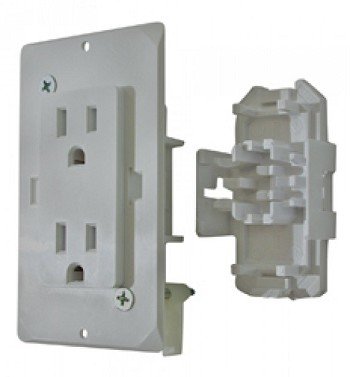A GFCI trips when the hot or neutral wires in the outlet are shorted to ground, e.g. the ground wire or the RV chassis. The short may also be downstream from the outlet, if additional outlets are daisy chained to it (very likely in an RV - see the schematic Chris provided). Breakers have nothing to do with GFCI tripping.
If you don't have any lucjk visually inspecting for a short, disconnect the wires that daisy-chain to the next outlet and see if the trip still occurs. Repeat this process one at a time, along the line of outlets until you isolate the one that is causing the trip. The optimum method is to pick a place in the middle of the circuit first, thus immediately showing which half has the problem. The other popular technique is to start at the farthest end and work back towards the GFCI outlet. That may take longer (depending on where the problem lies), but when you get to the one that stops the tripping, you know you have the culprit!

